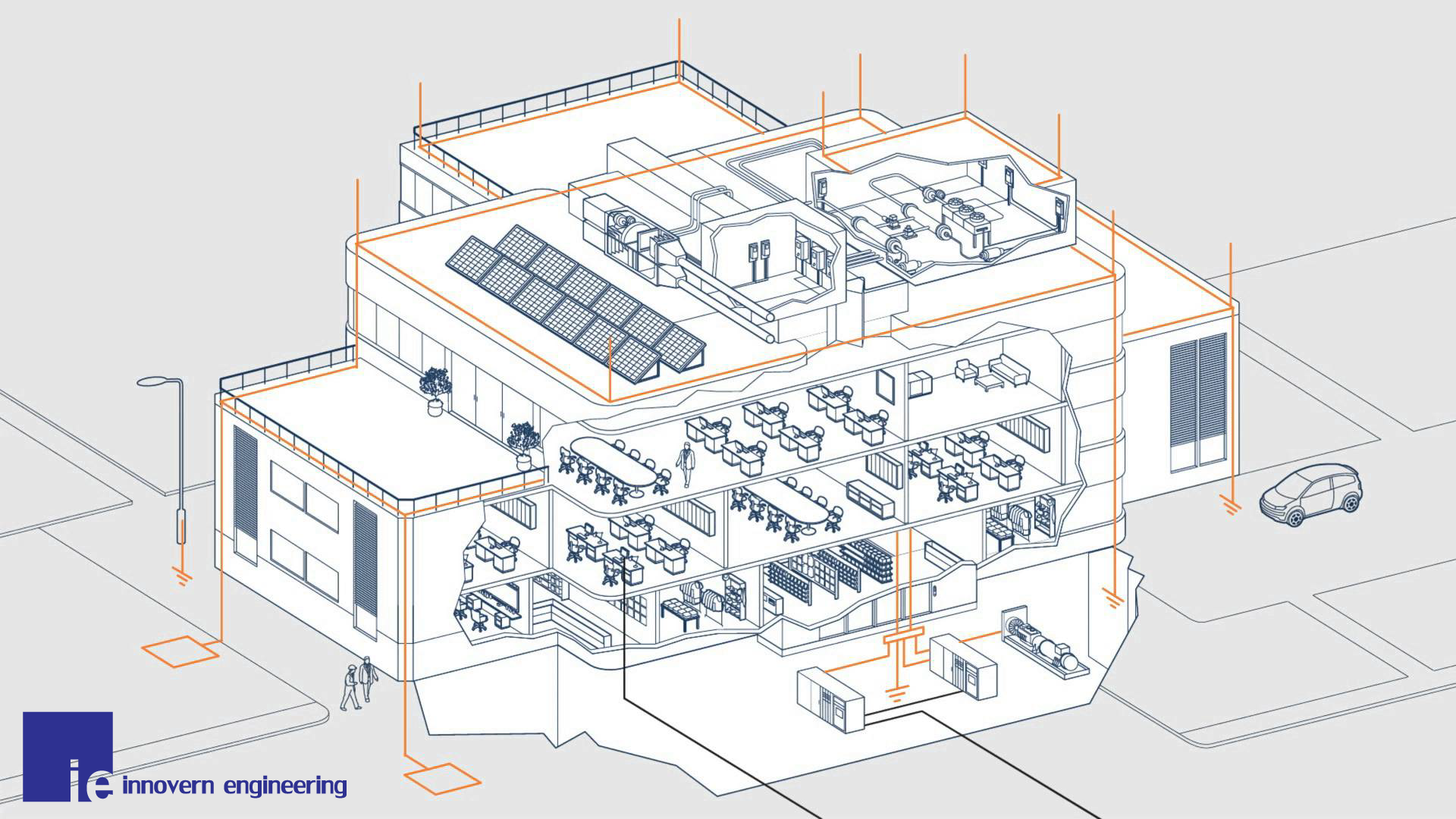What is Lightning Protection System
What is Lightning Protection System
A lightning protection system is a designed set of components and equipment installed on top of the building or roof of the structure to protect it from the potentially destructive effects of lightning strikes. The main function of a lightning protection system (LPS) is to ensure a safe and low-resistance path to carry the lightning current to travel from the point of strike to the ground, thereby minimizing the risk of fire, structural damage, and harm to occupants.
Key Components of a Lightning Protection System:
- Air Terminals (Lightning Rods):
- Function: These are metal rods installed at the highest points of a building or structure. Their role is to intercept lightning strikes and direct the electrical discharge safely towards the ground.
- Down-Conductors:
- Function: These conductive cables or rods connect the air terminals to the grounding system. They provide a path for the lightning current to travel downwards, away from the structure.
- Grounding System:
- Function: This network of buried electrodes provides a low-resistance path for the lightning current to dissipate into the earth. Effective grounding is crucial for the safe dispersion of the lightning energy.
- Bonding:
- Function: This involves connecting all metal parts of the structure (such as pipes, rails, and structural steel) to ensure they are at the same electrical potential, reducing the risk of side flashes.
- Surge Protection Devices (SPDs):
- Function: These devices are installed to protect electrical and electronic systems from voltage surges caused by lightning strikes. They limit the voltage by diverting the excess energy to the ground.
Benefits of a Lightning Protection System:
- Safety: By providing a controlled path for the lightning current, these systems protect the occupants of the building from electric shock and fire hazards.
- Structural Integrity: Prevents damage to the building’s structure, reducing the risk of costly repairs and downtime.
- Protection of Electrical Systems: SPDs protect sensitive electronic equipment and electrical systems from voltage surges, ensuring their longevity and reliable operation.
Types of Lightning Protection Systems:
- Conventional Lightning Protection System (Franklin Rod System): Uses air terminals, down-conductors, and grounding electrodes.
- Early Streamer Emission (ESE) System: Increases the area of protection by generating an upward streamer earlier than conventional rods.
- Dissipation Array System (DAS): Reduces the likelihood of a lightning strike by dissipating static charges.
- Faraday Cage (Mesh or Grid System): Uses a conductive mesh or grid that surrounds the structure.
- Integrated Lightning Protection System: Combines various components to provide comprehensive protection.
Conclusion:
A lightning protection system is a vital investment for any structure vulnerable to lightning strikes. By implementing such a system, the risks associated with lightning, such as fire, structural damage, and injury, can be significantly reduced, ensuring the safety and longevity of the building and its occupants.





Leave a Reply